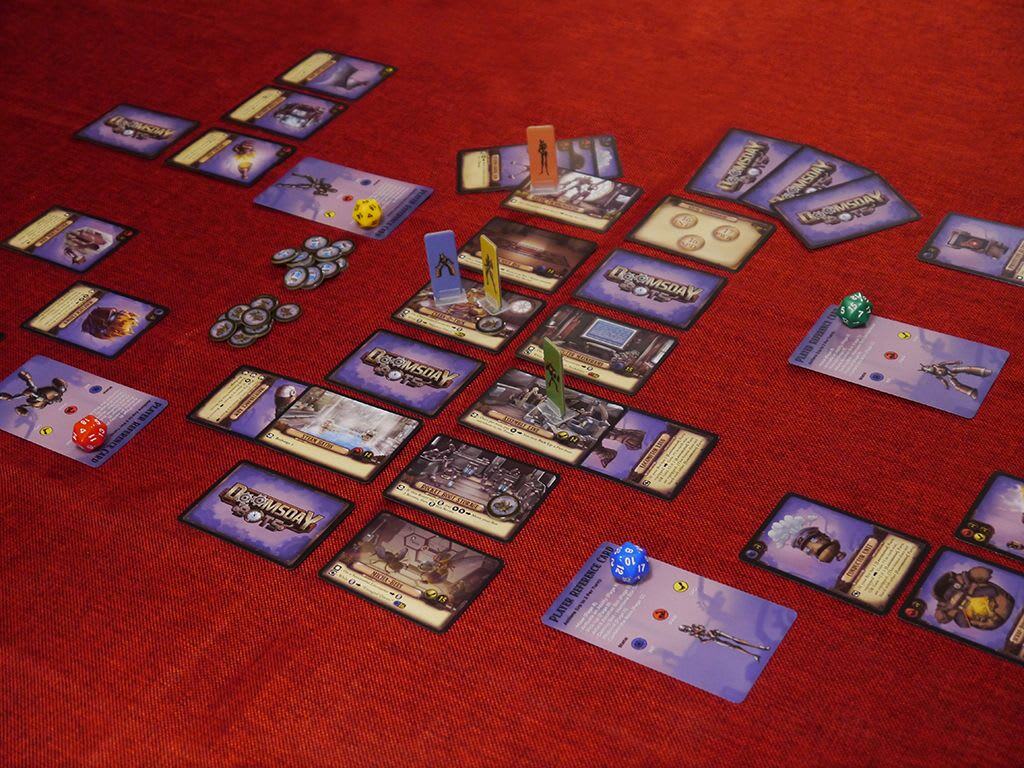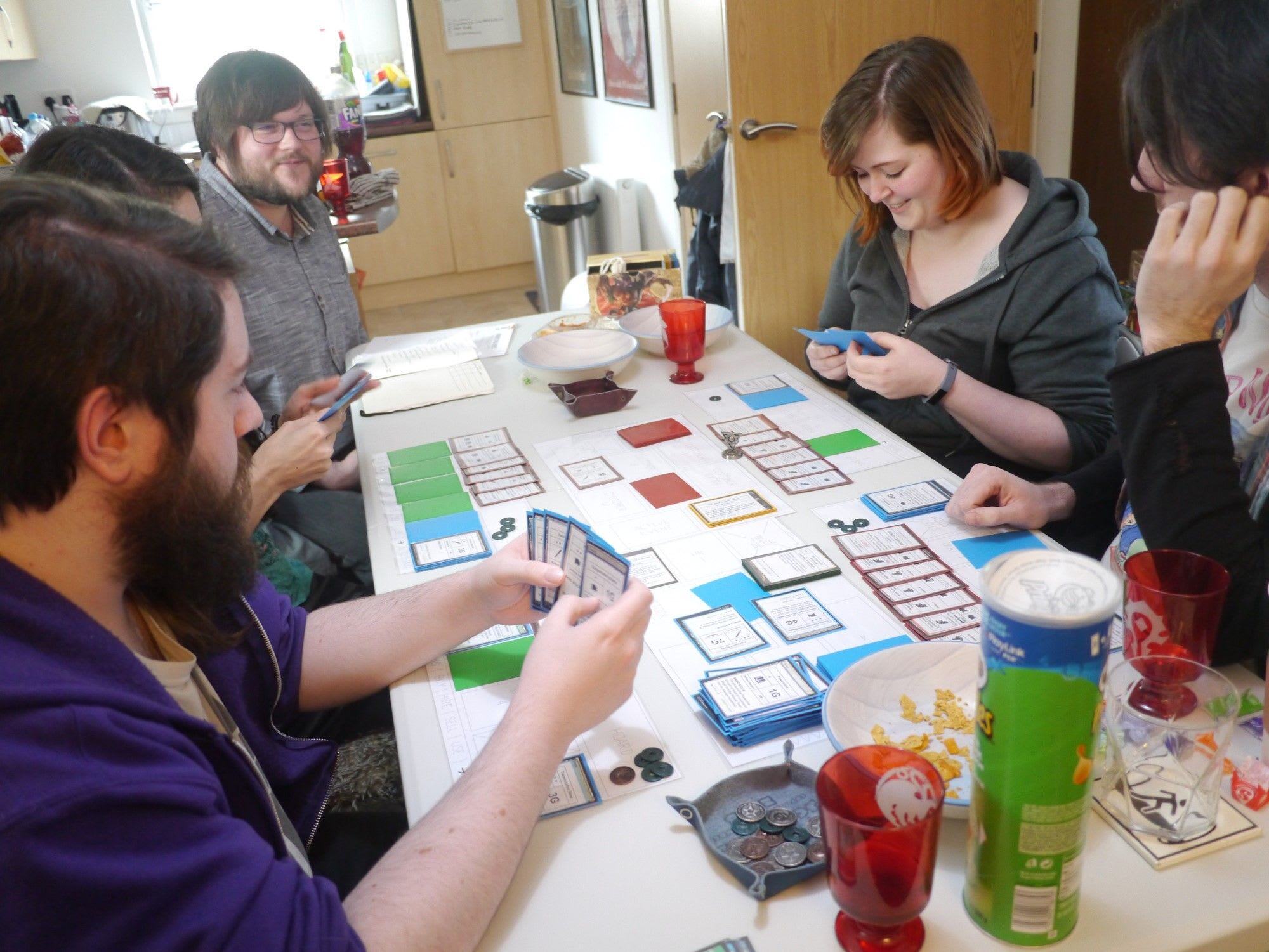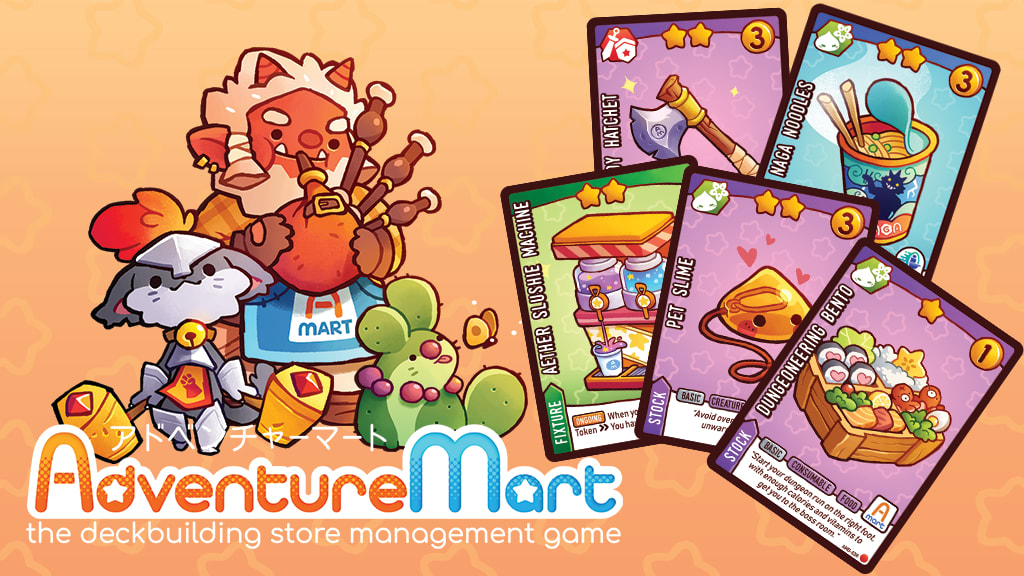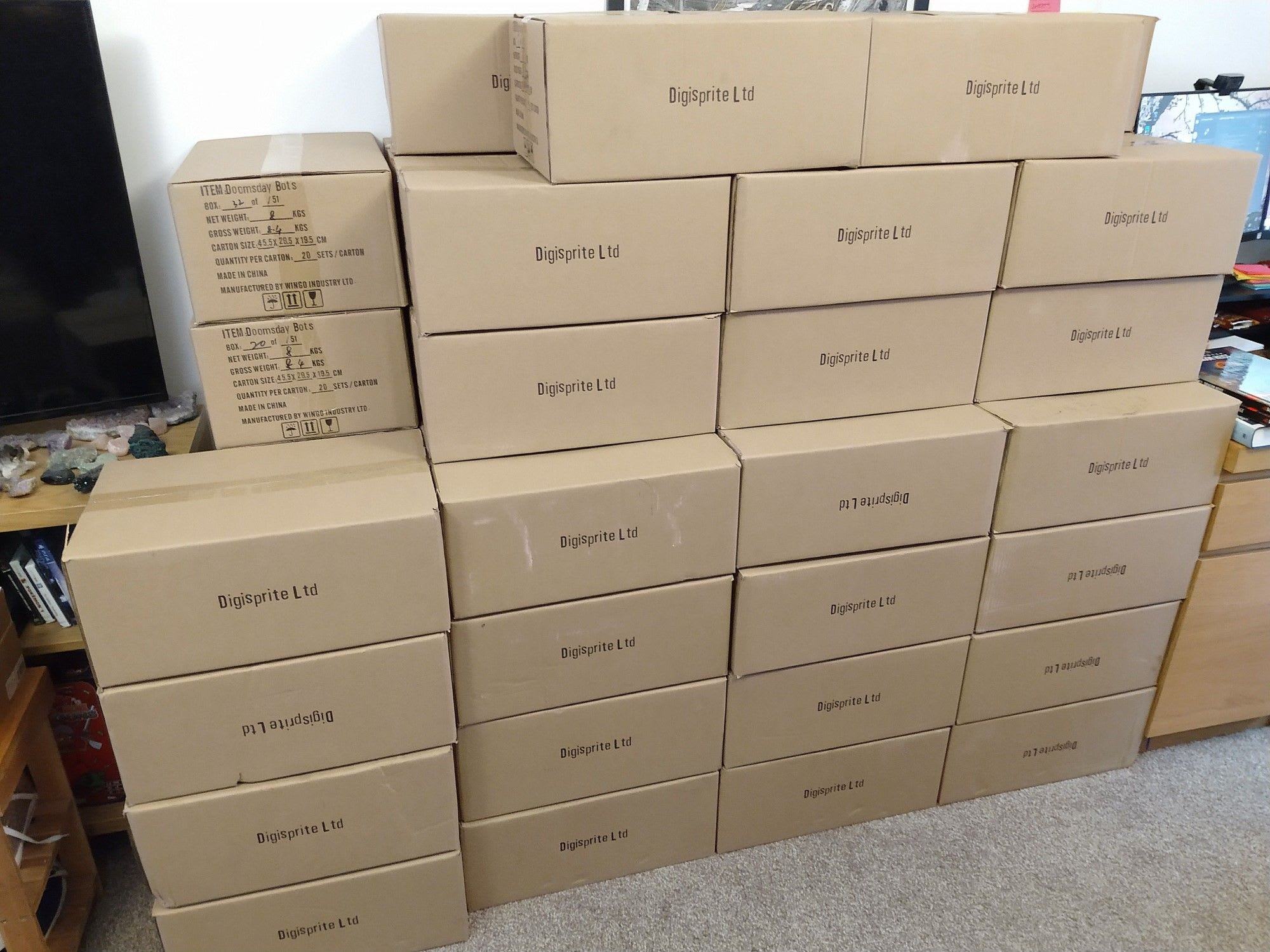Elaine Lithgow has a special role at X-Team. She's our Game Designer, responsible for creating the awesome games we play on Slack. That's why it should come as no surprise that she's also a Game Producer at DigiSprite, the Scottish game development studio behind Doomsday Bots, a competitive board game. I spoke with Elaine about the many aspects of creating board games.
Hi Elaine! Thank you for taking the time to speak to me. Let me start off by asking why you decided to build your own board game?
Impatience, mostly! At the time, I had been working in the Video Games industry for over a decade. I was well used to the creative process of crafting digital games and always felt like, while I had tonnes of ideas, the process of making a game took so much time and effort that I’d never be able to make a game in my spare time.
Then, one night, my partner was working away on their own personal project, an independent digital Dungeon Running Card Game. They had been struggling to find the core loop of the title, to pinpoint the fun. Especially when they didn’t have any networking code to play the game against anything other than a rudimentary AI. They wanted to be able to adjust cards and play against other people without spending weeks writing networking code, building UI etc...
Any digital game developer can tell you that something as simple as taking a card from your hand and placing it on a table to trigger an effect is a complicated, multidisciplinary problem that takes a lot of time to solve in a digital game. You need art and effects for the card, a database of its effects, animations, networking to translate that to another opponent, etc... The list goes on.
With a physical game, you just pick up the card, put it on the table and read the effect. It’s immediate, simple and you can instantly feel if it’s fun. That's why we decided to make a paper prototype of my partner's game. We grabbed some Card Sleeves, some blank paper, a couple of marker pens and set to work. By the end of the evening, we were sitting across the table from each other playing a game that we had conjured from thin air… and enjoying it!

It was a magical experience that showed us just how much you can do if you eliminate the barriers standing between you and your creativity. That was when we decided to try and ditch the digital for this project and make a physical game. We had the game working in front of us, all we needed was art to make it pretty and a way of manufacturing it… how hard could it be?
Ha, I sense some irony there. Can you tell us a little bit about the process of creating a board game? What are the steps you go through to move from an idea to a finished board game?
It's starts with an idea. You break out the paper, pens, and dice and you get to work rapid prototyping it. Depending on how complex the game is, and if you have everything you need on hand, you can go from concept to a rough proof of concept paper prototype within a few hours. You don’t need anything fancy; we’ve had moments where inspiration strikes and we make a prototype using condiments and kitchenware while out for a meal (waiters usually find this a bit odd, but we don’t let that stand in the way).
Once you have your prototype, it’s all about refining and making it look good. So we play, play and play the game until we’re sick of it. Then we drag in friends and family to play it. Then people from the local game clubs. Finally we try to rustle up complete strangers too!
It’s very easy to get tunnel vision when designing and iterating board games. Tiny problems that you can’t stop focussing on can dominate your thought processes, while larger, glaring issues slip by unnoticed. The new player experience is also incredibly important with board games, and so easy to mess up!
I tend to think of it like coding. Whenever you sit someone down at a table and hand them a pile of cardboard and an instruction manual, you are essentially asking them to read and compile a game engine in their heads. Their ability to do this in an efficient and correct manner is entirely dependent on how well you write your rulebook, how clear your components and rules are, and dozens of other factors. Since you only get one chance for a first impression, we go through a lot of testers.

While this iteration and testing is taking place, we put together our visual design documentation and begin searching for artists to bring the game to life. Rather than letting one artist’s range dictate what our games look like, we instead try to find an artist whose style matches our vision of the game. This way, we can keep our games visually diverse and interesting, while not feeling tied down to one specific theme.
Lucky for us, just as X-Team has shown us, there is a wealth of amazing talent across the globe, all accessible remotely! So we put out the call and go looking for artists to fulfill our vision.
As an indie studio, we don’t often have enough money to sink into a full title without ensuring that it will be a success first. So, we commission an artist to make enough art to make a vertical slice of the game, and we move on to stage two… crowdfunding!
I could write an entire novel on crowdfunding at this point, there is just so much to cover, but I’ll save you my rant for another day. In my eyes, crowdfunding is the heart and soul of modern indie development. You take your concept and show it to the world, preferably before you have spent all your life's savings on it.
The world tells you if there is an audience for it or not. If so, you get the money you need to make that dream a reality. If not, no problem! You can refine the idea or scrap it and try something fresh. That’s the beauty of crowdfunding, like everything indie dev, it’s agile, fast and passionate. If the idea gets funded, then it’s simply a case of finishing the project, manufacturing and delivering all on time and within budget… Nothing to it!

So far, what has been the biggest challenge you faced when creating a board game?
The sheer amount of learning required to switch gears from digital development/distribution to physical. Nowadays, if you’re making an app or a game, you have lots of ways to deliver it to your end users. Whether it's Steam, the App Store, Google Play, it’s a fairly simple process to put it online.
With physical board games, we suddenly found ourselves dealing with factories in countries on the other side of the world. Organising proofs, shipping containers, import tax, packing and sending to the hundreds of addresses for your customers… We did all that by hand on our first project and it was an eye opening lesson in the harsh realities of real world logistics.

That definitely sounds complex. Did X-Team's Unleash+ budget help with any of it?
It helped us buy so many boardgames! We have regular game nights with the team, where we conduct what we call “Scholarly Boardgaming.” Essentially, we buy at least one new or interesting board game to play, and after a few games we all have a meal and pick it apart. We search for the things we like and dislike, the design, the theme, how the rules are displayed and even the quality of the components or who manufactured them!
It’s a proper deep dive analysis that allows us to walk away with lessons, inspirations and vital information about what the other board game companies are doing… plus we get to play games and have good meals!
Since I started working at X-Team, I think the lion’s share of my big Unleash+ purchases have gone towards game purchases. It’s great being able to take a chance and pick up games that I might not have had in the past due to the cost associated with them.
That's really good to hear! From all those games you've bought, what's your favorite one of all time & why?
Ouch, this question hurts. It’s like being asked to pick my favourite child! But if you really forced me, gun to my head, to pick my favourite game at the point of writing, it would be “Escape the Dark Castle”.
I love games that allow players to experience a memorable story. If the players can walk away from the table with smiles on their faces and a tale to tell, I count it as a success. Escape the Dark Castle is a wonderfully simple dice rolling game that takes its players on a journey through a delightfully grim tale familiar to anyone who has played any “Demon/Dark Souls” games. You make choices, fight horrifying monsters and try to escape as you flip through the randomly generated storybook, all with a nice 30-60 minute game time.
It’s such a clean game, that lands on the table, gets going quickly and wraps up in a perfectly contained manner that never ceases to leave people with smiles and laughter every time I bring it to a game night.
Escape the Dark Castle. A good one to remember. Finally, do you have any advice for people who want to create their own board games?
Just give it a try! All you need is pen, paper, and a couple of hours to take an idea from your head and slam it down on the table. Don’t be precious with your ideas either. Get them out there and see if they are fun. Many won’t be at first, and that’s fine! We have countless discarded aborted prototypes littering our home office.

But in my eyes, making games isn’t about secreting away one idea and polishing it forever in your head, it’s about making it real. Your idea is a bar of raw steel. Ugly, blunt and misshapen. Only by exposing it to the furnace, hammering it into shape and polishing it to a mirror shine can you make a glimmering weapon to carry into battle at your next game night.
That's great advice. Thank you so much for your time, Elaine. Best of luck with your board games!



